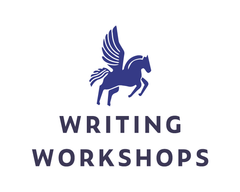Blog
Plan Before You Write: On Writing A Novel Or Series, By WWD Instructor Amber Royer
by Writing Workshops Org Admin
6 years ago
Foreshadowing is one of those things writers have to do with a deft hand. You bring it on too heavy, and everyone will have figured out your brilliant plot twist miles before your characters do. Too obscure, and you leave the readers scratching their heads.
Want to know how to make it more natural? Have a feel for your characters’ backstory and how plot events are going to play out BEFORE you write your first draft.
- If you know that Bill is secretly working undercover, then when you write his dialogue with the bad guys, you will naturally weight his words with double meaning, things the reader will go “oooooooh” about after you have him reveal his true identity.
- If you know that the cat is going to be important to solving the mystery, you can write it in as you go, giving amateur detective Kiku an allergy to cats, making her notice it – and keep track of it.
- If you know klutzy Sarah is going to need to pull off a sleight-of-hand trick to rescue her love interest from the fortress of doom, you can show her gaining confidence and competence in these skills (and give her a reasonable reason to be learning them) from the beginning.
- If Eduardo is supposed to be an expert in Japanese whiskey in order to figure out a clue, knowing he used to be a bartender and has traveled the world to sample fine spirits for his current job will help you shape his dialogue to subtly hint at this expertise, even if all anyone else knows is that he is a fellow passenger on a cruise ship.
I know pre-writing and planning sounds like a lot of work. After all, can’t you go back after you finish a draft and add things like this? You certainly can. But to me, that’s even more work – and it’s hard not to make it feel forced.
Knowing your character’s backstory can also make it easier to figure out what to do with the second act of your plot – the dreaded “sagging middle.” Larry Brooks said, “Characters are sometimes defined by their backstory. And sometimes they are who they are in spite of their backstory.” Knowing what the character is fighting against (how flawed they are, psychological wounds from their upbringing, past interactions with the antagonist, etc.) can help you figure out what tests they need to face so they can succeed at THE END.
And knowing the key elements of your plot can help you define the type of character that can be truly transformed by it. In fact, every element of story planning can make the others easier. Knowing details about the world-building can suggest ways the character can use them to solve problems – and ways the physical environment can cause challenges. Planning out themes in the work helps you figure out what scenes and characters are relevant to supporting that theme.
And yet, it’s easy to get lost in one element of story planning and never move forward to actually write the novel.
Amber Royer is the author of the forthcoming science fiction novel Free Chocolate, named one of Barnes & Noble's 25 Debuts to Watch for in 2018.
